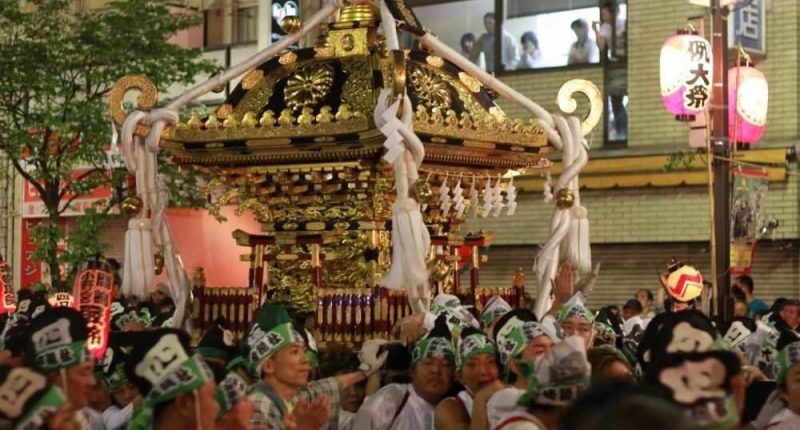Kurayami Matsuri is one of Tokyo’s most popular festivals and one with a rich and long history with roots that extend as far back as the 11th century. The draw today is the fact that the festival’s main events take place in the dark (as you might have guessed from the name). This is because long ago it was believed that sacred things should not be seen with the naked eye. Today the festival attracts over 700,000 visitors over the course of the week and in 2010 it was designated a Folk Cultural Treasure. The main events take place over the 3-6 May but rituals to prepare for the event take place from 30 April. The schedule of events is below.
30 April
From 1pm the priests and those who will participate in the festival cleanse themselves water from the Shinagawa River near Ebara Shrine (in Shinagawa Ward) and take this water back to Okunitama Shrine to be used during the festival (a long-standing tradition for the festival).
1 May
Prayers for dry weather and safety during the festival from 9:30am.
2 May
From 7:30-8:00pm the 8 mirrors that are used on the portable shrines (mikoshi) are cleansed with salt because it is believed that the mirror reflects not only your physical self, but the spirit within, and so by cleansing the mirrors you are also cleansing those that will carry the mikoshi.
3 May
Between 6pm and 8pm eight floats parade along the street. This is followed by a horse procession called komakurabe in Japanese, whereby the speed, prowess, and obedience of the horse is displayed. Six horses make 3 round trips up the 150 meter stretch of road.
4 May
The first full day of the festival. Processions take place from 9am and the day culminates in a parade of 24 lantern-laden floats between 6pm and 9pm.
5 May
Events start in the morning but the main event of the day—and indeed the festival—when six portable shrines are carried through the streets from 6pm. These mikoshi return to the shrine at 4am the following morning.
